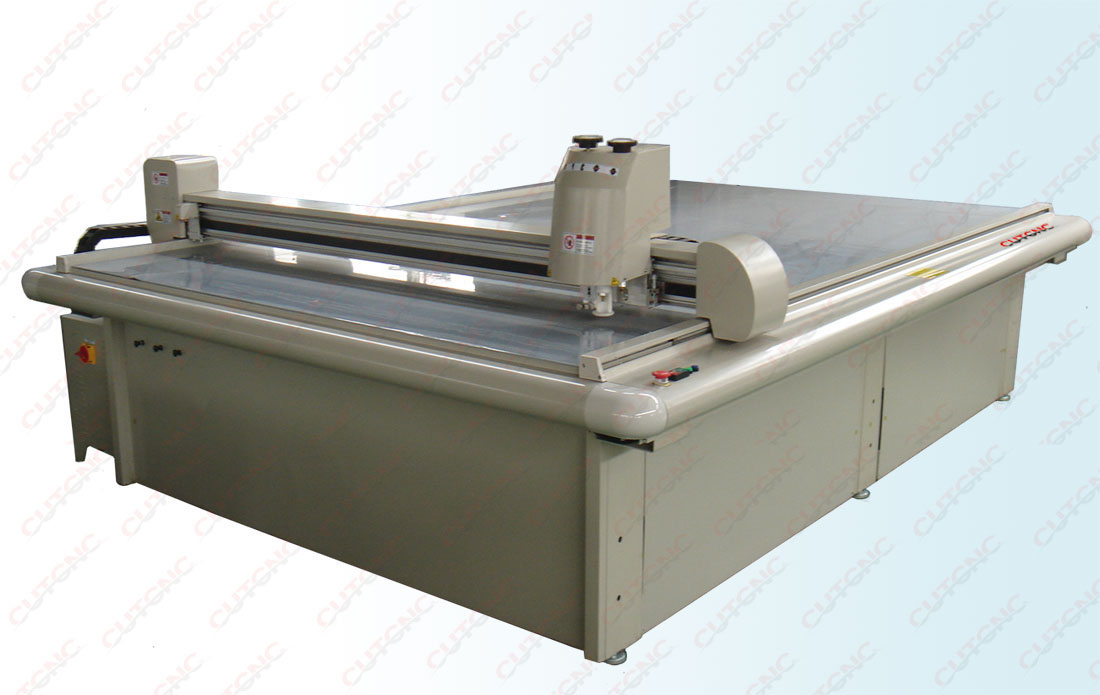 If you own or are planning to own a flatbed printer, there are a number of compelling reasons to also own a flatbed digital cutter[digital cutter?:CAD flatbed digital cutter][flatbed digital cutter?:sample maker cutter plotter] machine. This doesn’t mean that in order to make money with a digital cutter that you must own a flatbed printer, but it is a great combination.
If you own or are planning to own a flatbed printer, there are a number of compelling reasons to also own a flatbed digital cutter[digital cutter?:CAD flatbed digital cutter][flatbed digital cutter?:sample maker cutter plotter] machine. This doesn’t mean that in order to make money with a digital cutter that you must own a flatbed printer, but it is a great combination.
The digital cutter is the ultimate workhorse. Unlike a standard CNC table router, which offers an X,Y and Z cutting axis, digital die cutting[die cutting?:die cutting] systems only cut along the X and Y axis. The thing I really love about digital die cutting systems is that they actually help increase the value of a graphic. With the advanced features in many of today’s RIPs, images as complicated as a baseball glove can be sent to the RIP where die cut lines are automatically created around the glove, and the cut file is sent to the cutter.
Easy!
But in order to get the most from it, you need to understand how digital die cutters work and what blade and tool options are available for practical applications. Following is a rundown of some of the popular cutting tool choices for a digital die cutting system[cutting system?:sample maker cutting machine].
Kiss-Cut Blade — The kiss-cut blade functions just like the tangential blade in a vinyl cutter. The kiss-cut blade is ideal for cutting adhesive-backed vinyl.
Drop Blade — The drop blade is used for cutting or scoring soft material like polystyrene[polystyrene?:cnc ps/polystyrene cutting machine] (up to .060), Lexan (up to .030), banners 13 oz. and heavier, foam board[foam board?:foam board] and Coroplast[Coroplast?:Coroplast sample cutting machine]
(up to 6 mil), and many other materials that are soft enough to cut with a knife. Polystyrene is a perfect application for scoring the boards, as you only need to bend the score a little and the graphics[graphics?:graphics pattern] just pull away.
Oscillating Blade — This blade moves up and down very fast and is ideal for cutting foam-based boards like Gator and Sign Foam. This tool will allow you to cut material up to 2" thick.
Router — This tool is used for just about all hard boards and some soft boards. It requires a good understanding of the boards being cut, and to distinguish between cutting a flatbed-printed graphic or a hand-mounted graphic. The cutting bits are numerous for this tool. Router bits are expensive, so understand that each material can be cut at a speed only relative to the hardness and thickness of the material. The harder and thicker the material, the slower the cutter. For example, Plexiglas or Dibond may take longer to cut than PVC[PVC?:PVC sample cutting machine] (Sintra). Be careful.
Creasing Tool — This tool is ideal for creasing boxes for folding. It works great in conjunction with the drop blade to cut and crease a printed graphic for later assembly.